The Twelve Greatest Defunct Tech Magazines Ever
By Harry McCracken | Thursday, November 20, 2008 at 6:17 am
 And so it came to pass that on November 19th, 2008 publisher Ziff Davis announced that PC Magazine–in the print version that gave it its name–was going to the great newsstand in the sky. When it gets there, it’ll have plenty of company: Most of the most important tech magazines ever published are no more, victims of the periodic industry shakeouts that are almost as old as the industry itself.
And so it came to pass that on November 19th, 2008 publisher Ziff Davis announced that PC Magazine–in the print version that gave it its name–was going to the great newsstand in the sky. When it gets there, it’ll have plenty of company: Most of the most important tech magazines ever published are no more, victims of the periodic industry shakeouts that are almost as old as the industry itself.
Herewith, a look at a dozen tech publications that don’t exist anymore (in print form, at least–some are still with us online). All of them were significant in one way or another, all had loyal readerships who mourned their loss, and most were terrific magazines, period. It’s in chronological order by the year of founding. And no, I didn’t include PC Mag: It’s got one more issue to go and therefore isn’t a defunct tech magazine just yet.
(Full disclosure: I toiled for thirteen and a half happy years at IDG, the publisher of some of these magazines..and I have friends who worked at just about all of them. I don’t claim to be a dispassionate bystander, but I count myself lucky to have worked in dead-tree tech publishing back when it was booming.)
Popular Electronics (1954-1985)
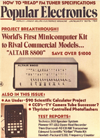 Publisher: Ziff-Davis
Publisher: Ziff-Davis
What made it special: Mostly one legendary cover story–the January 1975 one about the MITS Altair microcomputer kit. When Paul Allen saw it on a newsstand in Harvard Square, he showed it to his buddy Bill Gates; the two got so excited that they formed a company to write software for it. Would Microsoft have been founded if Popular Electronics had never existed? Probably, but the mag still deserves the credit for inspiring the biggest software company the world has ever known.
Random factoid: Popular Electronics may have predated Ziff-Davis publications such as PC Magazing and PC/Computing by decades, but it wasn’t Ziff’s first magazine for gadget nuts. That would be Radio News, which it acquired in 1938.
The final days: In 1982, the magazine tried to reinvent itself into a computer magazine under the name Computers and Electronics; it didn’t work. Renaming and refocusing magazines never works. (See: PC/Computing.) Computers and Electronics folded in 1985, but the name was revived in 1989 for a magazine that was later renamed Poptronics before closing again in 2002.
Current whereabouts: Popular Electronics is dead–at least at the moment–but Modern Mechanix has some entertaining reprints from the publication’s golden age. And here are more scanned issues.
Creative Computing (1974-1985)
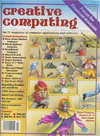
Publishers: Ahl Computing, Ziff-Davis
What made it special: Creative Computing really was creative. And funny. And passionate about its topic. And admirable in the way it covered every major computing platform of the era, from the Commodore PET to the Atari 800 to the IBM PC (the machine whose success would eventually help kill Creative).
Random self-indulgent trivia: The first thing I ever wrote about computers (or any other topic) appeared in Creative‘s October, 1982 issue. It was a review of arcade games for the TRS-80.
The final days: Founder David Ahl sold Creative to Ziff-Davis in the early 1980s. Some of the best issues were published after the acquisition, but Creative was by its very definition a multi-platform publication, and successful computer magazines were increasingly dedicated to a single platform (most often the IBM PC) with fanatical dedication. Ziff shuttered the publication in October, 1985.
Current whereabouts: The Classic Computer Magazine Archive has the full text of some issues. David Ahl, meanwhile, runs a site called Swap Meet Dave. It features jokes, cute pictures of dogs and cats, financial advice, and books for sale–including some Creative Computing ones.
Byte (1975-1998)
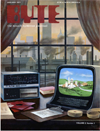 Publisher: Green Publishing, McGraw-Hill
Publisher: Green Publishing, McGraw-Hill
What made it special: Byte was the first must-read computer magazine–the publication that the industry rotated around in the 1970s and early 1980s. It featured highly technical reviews and previews, how-tos, and the columns of Jerry Pournelle, who kind of invented writing about computers from the perspective of a smart user who just wanted to get stuff done. For many people, it was the perfect computer magazine: I’ve spent my whole career hearing from folks who compare current computer publications unfavorably to Byte in its golden age. And If I’m alive in fifty years and the subject of computer magazines comes up, I fully expect people to tell me that they still miss it.
Random factoid: For its first eleven years, Byte‘s covers were original paintings by artist Robert Tinney–one of the most clever and distinctive cover styles of any magazine on any topic. I still remember my disappointment when the magazine switched to humdrum photographs of new computers.
The final days: In 1998, CMP purchased Byte from longtime publisher McGraw-Hill. And then it shut it down–a shocking move at the time, even though it was obvious that the publication was already a shadow of its fat, ad-filled former self. The Web site continued on, though, and for a while it had plenty of original content.
Current whereabouts: Byte.com still exists, but has been more or less abandoned. Sad. Jerry Pournelle’s own site has some of the old-time Byte feel.
InfoWorld (1978-2007)
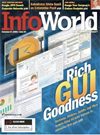 Publisher: IDG, for all of its lifespan except the very start, when it was an independent publication known as the Intelligent Machines Journal
Publisher: IDG, for all of its lifespan except the very start, when it was an independent publication known as the Intelligent Machines Journal
What made it special: For many years, InfoWorld was the tech industry’s dominant newsweekly–back when weekly was about as timely as tech-industry news could get. Yet it was also a reviews powerhouse, the proprietor of one of the largest testing labs ever opened by a computing publication. Other highlights included former Editor-in-Chief Stewart Alsop’s editorials (which read like blog posts before blogs had been invented) and the columns of enterprising gossip reporter/fictional person Robert X. Cringely (now a blogger himself and, weridly, two different fictional people.)
Random self-indulgent factoid: This is the only publication on this list that made the questionable decision of hiring me–I worked at an offshoot called InfoWorld Direct from 1992 to 1994.
The final days: A newsprinty tabloid for most of its life, InfoWorld converted to a smaller, glossier magazine-style format in 2003. (It had been a magazine at least once before, and maybe more–it was notorious in its early years for changing formats more or less constantly.)
Current whereabouts: Alive and well as a pure online publication at InfoWorld.com.
Compute! (1979-1994)
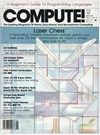 Publishers: Compute Publications, ABC, General Media
Publishers: Compute Publications, ABC, General Media
What made it special: Compute! was the last of the great hobbyist computer magazines. It was originally devoted to machines that ran the 6502 processor, such as the Apple II, Atari 400/800, and Commodore 64. And while it was less geeky than Byte, it was full of nerdy features like listings of BASIC programs you could type in yourself.
Random factoid: Compute! was originally devoted entirely to the Commdore PET computer, and was–perhaps inevitably–called The PET Gazette.
The final days: In 1990, Compute! was sold to Bob Guccione’s General Media, thereby becoming a sister publication of Penthouse. If there have been two more utterly different magazines in publishing history, I’m fogetting about them right now.
Current whereabouts: None. As far as I know, Compute! never had a Web site, so it didn’t leave many traces on the Internet. But the Classic Computer Magazine Archive has the full text of dozens of issues.
80/Microcomputing (1980-1988)
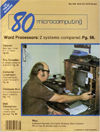 Publishers: Wayne Green, IDG
Publishers: Wayne Green, IDG
What made it special: Devoted entirely to Radio Shack’s TRS-80 microcomputers-please don’t call them Trash-80s-80/Micro wasn’t the first computer magazine devoted to a single platform, but it was the first insanely successful one. It thereby set the template for most computer magazines that followed-I used to say that PC World was essentially an 80/Micro clone that happened to be about Windows, not TRS-80s.
Random factoid: 80 Micro, like other Wayne Green publications, was produced out of a former motel in Peterborough, New Hampshire–within walking distance of Byte’s offices.
The final days: If a computer magazine lives by a platform, it’ll die by the that platform–and so when Radio Shack segued from making its own unique machines into becoming a manufacturer of IBM PC clones, 80 Micro‘s fate was sealed.
Current whereabouts: Alive in the hearts of TRS-80 devotees everywhere.
1 2 NEXT PAGE»
80 Comments
Read more:
76 Comments For This Post
4 Trackbacks For This Post
-
Cool toys and Gadgets » Blog Archive » Popular Electronics 1954-1985 Says:
November 20th, 2008 at 12:41 pm[…] a round up of the “greatest defunct tech mags ever” – it includes one of my favorites, Popular Electronics…. Popular Electronics (1954-1985) – What […]
-
peHUB » peHUB First Read Says:
November 21st, 2008 at 4:45 am[…] * In mourning over the death of PC World’s print version, Technologizer presents the 12 greatest defunt tech mags. […]
-
Derek Powazek - links for 2008-11-22 Says:
November 22nd, 2008 at 12:30 am[…] The Twelve Greatest Defunct Tech Magazines Ever As much as I love magazines, there are some areas that just do better on the web. Technology is one of them. (tags: technology magazines publishing) […]
-
Best Contextless Links of 2008 | jordoncooper.com Says:
December 21st, 2008 at 2:11 pm[…] The Twelve Greatest Defunct Tech Magazines Ever […]













November 20th, 2008 at 6:30 am
Creative Computing was brilliant, but unfortunately I only have a few issues.
You missed Boardwatch:
http://en.wikipedia.org/wiki/Boardwatch
Doctor Dobbs Journal used to be good in the early days. I don’t subscribe any more. Ditto for Personal Computer World.
November 20th, 2008 at 6:37 am
My vote goes to Computer Languages.
November 20th, 2008 at 6:48 am
I know several people who would put ZD’s “Corporate Computing” on that list. (It closed in… 1993? thereabouts?)
November 20th, 2008 at 7:07 am
What about PC Magazine? http://www.pcmech.com/article/bye-bye-pc-magazine/
November 20th, 2008 at 7:10 am
This is a great list. One that I remember subscribing to and really enjoying during the bubble was Yahoo! Internet Life. Not incredibly deep technically, but it was a great guide to finding quality content and applications on the web before sites like Hacker News and Digg were around.
November 20th, 2008 at 7:11 am
What about Datamation?
In the late 60s it was the ONLY magazine out there.
November 20th, 2008 at 7:12 am
What about FamilyPC? and Access Internet Magazine? Those mags rocked… (but i’m biased.)
November 20th, 2008 at 7:21 am
What about “Kilobaud”?
November 20th, 2008 at 7:22 am
What about Boardwatch?
November 20th, 2008 at 7:26 am
Upside as a tech magazine? Well, ok. But I think the short lived Windows User, 1992-93, should be on the list, which I thought broke new ground in hands on product reviews.
November 20th, 2008 at 8:32 am
what about nibble and softwalk?
November 20th, 2008 at 8:40 am
I think everyone here seems to have forgotten Amiga Power. A completely unique magazine, and a cult classic.
November 20th, 2008 at 8:54 am
As a former Upside staffer (there are lots of us scattered around), it’s great to see it made your list. It was fun while it lasted.
November 20th, 2008 at 9:14 am
Upside had a hilarious ‘enemies list’ issue. I think they so severely ticked off the industry that it may have ended up costing them ad revenue.
November 20th, 2008 at 9:33 am
You also missed Boot Magazine, which is relatively recent (Started in 96 I think). In it’s earliest form, before morphing into MaximumPC, it was a must read for computer performance geeks.
November 20th, 2008 at 9:40 am
What about Business 2.0?
November 20th, 2008 at 9:44 am
I suppose Computer Shopper doesn’t count because it was mostly about the ads, but it certainly has a place on the list of personal computer magazines that I miss.
November 20th, 2008 at 9:45 am
I remember reading the Byte editorial when Windows 3.0 was launched. They had thoroughly tested the new product, and were convinced that it would completely revolutionise the PC environment.
They were spot-on with that call – as they were so often.
November 20th, 2008 at 10:01 am
Oh sure — commodore represented, but no Atari? Where’s ANTIC Magazine on this list? 🙂
November 20th, 2008 at 10:08 am
Some other magazines that might make the list:
– CUJ – not exactly dead, but got merged with DDJ (Dr. Dobbs Journal).
– VBPJ – Visual Basic Programmer’s Journal
Read some issues, all 3 were very good in the same spirit as BYTE and others were earlier – with lots of code listings and technical discussions.
C++ Report – again, very good, IMO.
November 20th, 2008 at 10:21 am
Yeah, Compute! and Creative Computing were regular reads as a kid so we could type in games for our Atari 400 / 800’s – until one you missed came out, Analog. Unlike the BASIC programs that you could enter, Analog printed the machine code HEX characters with checksums at the end of each line. We’d spend hours typing in pages of the characters – but the results were well worth it – games that rivaled Tempest and others. I subscribed to Compute and Analog. Wish I still had ’em for nostalga’s sake.
November 20th, 2008 at 10:47 am
A moment of silence for a few others: The Net (Future), Computer Life (Ziff), Computer Currents, Publish! (formerly IDG, later spun off) … and does anyone remember “Infobahn”?
November 20th, 2008 at 11:04 am
But but but… you didn’t mention CD-ROM Today. (And yes, that is a good thing.) Which became Boot, which became Maximum PC, which against all odds is still publishing.
Strangely, I only wrote for two of the pubs Harry mentions (one of whom, Infoworld, I still write for online — more than ever, actually).
The only one I mourn is Industry Standard (the other one I wrote for). That was a really good book, done in by a market crash and its founders’ own hubris. (One of whom runs the blogging empire that Technologizer is part of, am I right, Harry?)
Others gone, for better or worse: Time Digital, which morphed into On magazine, then went bye bye.
Business 2.0, which merged with… oh god, what was it? I’m having a brain glitch.
And who could forget NeXT Magazine (about Steve Jobs’ post Apple computer). Oh right — everyone.
Fun post, Harry. Thanks for the stumble down memory lane.
dt
November 20th, 2008 at 11:46 am
Probably more science related, but Omni should be on the list
November 20th, 2008 at 11:51 am
Does that list ever bring back some memories. Especially the Byte magazines, I remember buying the last one published just as a keepsake.
November 20th, 2008 at 12:20 pm
Such power user snobs! Only that explains why Popular Computing was left out. But this sister publication to Byte, meant for real people who were getting into computing (and not tied to a platform, its downfall) did some excellent journalism. Michael Miller began there. Jerry Pournelle wrote a column there. Jonathan Sacks (later a bigwig AOL exec) worked there. Oh, and I wrote a column there, too, as well as a scatching smackdown of the PCjr. (IBM didn’t warm to the story–was it my calling it “braindead,” or the observation that “the PCjr has the smell of death about it”?) Anyone else remember PopCo?
November 20th, 2008 at 12:30 pm
What about Mondo2000 ???? That was the BEST mag!!!
And Wired. Wired was a cool rag too. Too bad it died.
November 20th, 2008 at 12:42 pm
I think Dan Tynan is struggling for the ever-forgettable Time Inc.’s “eCompany Now” – that’s what the original Business 2.0 merged with/became. (archived: http://www.viviente.com/ecompany/WebWeekly.htm) — and yes, of course, a toast to Mondo2000!
November 20th, 2008 at 12:42 pm
You forgot Business 2.0. It started out interesting, but it took a real turn for the year in its last two years. Telling that its final cover, in 2007, was predicting a housing boom. Hey, if you’re going to be so damn far off topic, you better be right. Instead it would have been laughed out of the universe if Time Inc. hadn’t, finally, made the decision to put it out of its misery.
November 20th, 2008 at 12:44 pm
B 2.0 sucked. It was just outright baffling. It’s like the entire staff was on crack for the last year, or so, of it’s existence. Never failed to be just outright off key.
November 20th, 2008 at 1:02 pm
Catching up on some of these comments (which I’m loving),
@Steven Levy Gee, if I’d of Popular Computing I might have included it–I was a regular reader, and bought the first computer I paid for with my own money (an Atari 400) based partially on its review.
@Tim I did think of Antic–it didn’t make the list, but I was a fan.
@woz Softwalk? Softalk, right? I probably shoulda included it…
@Boardwatch Fans To be honest, I didn’t read it enough to write it up–and I wasn’t even sure if it was still with us–but I do remember how many huge fans it had.
@David Hunter Computer Shopper is still with us, no? 1/10th its old size, but extant.
@RU Serius You’re right! About Mondo 2000 at least…
Looks like I may do a sequel story based on all these nominations…keep it up!
–Harry
November 20th, 2008 at 1:14 pm
@Karen Wickre I also considered including Publish, and maybe I should have…it was not only a good magazine, but clearly helped the world to leverage the power of the topic it covered…
November 20th, 2008 at 1:25 pm
You’re not going to believe this Business 2.0 cover.
So painfully, utterly wrong.
Reader service stuff is typically fairly harmless.
But if anyone took this advice it probably put them in bankruptcy.
Sooooooo stupid.
http://www.techcrunch.com/wp-content/b20finalb.jpg
November 20th, 2008 at 1:38 pm
I think I have mugs from all these magazines in my basement.
November 20th, 2008 at 2:04 pm
what about Dr. Dobbs Journal ? Was I the only one who read that instead of Byte?
April 21st, 2011 at 9:53 am
Dr Dobb's Journal of Computing Orthodona, subtitled Running Light without Overbyte
I could have it a bit wrong. … Somwhere I still have the first couple of issues!
November 20th, 2008 at 2:10 pm
Well I have to put a plug in for my beloved Computer Currents which I was editor of for many years. And of course to Steve’s point — I well remember Popular Computing. Great pub. Yes, I recall John Markoff worked in the same office as Jon Sacks in Palo Alto for a time in the ’80s when Markoff was at Byte.
Hard to see any upside ahead for print tech mags.
Big thanks for the article Harry, great read.
November 20th, 2008 at 2:34 pm
While COMPUTE! was originally aimed at PET owners, when it decided to embrace the other 6502 chippies, they did bring out a spinoff magazine called COMPUTE!’s Gazette, which strictly focused on the Commodore 64, 128, etc. COMPUTE! did eventually convert basic listings into hex/checksum entries so machine-code based programs could be entered, and the program I think they introduced that stratagem for was the original SpeedScript, a free and quite functional word processor that ran on a 64. I believe the late Jim Butterfield, as staunch a 6502 expert as they came, was on staff at COMPUTE!.
I remember, too, how deliciously thick these magazines were with info and ads. And type-in programs. Man, those were the days.
November 20th, 2008 at 2:59 pm
You are forgiven for leaving the most wonderful MicroCornucopia off your list — I’ll assume you never saw it.
Here’s a Flickr set for nostalgia’s sake: http://www.flickr.com/photos/mtm/sets/1463354/
November 20th, 2008 at 3:25 pm
I know you only left off poor Yahoo Internet Life ’cause you didn’t want to try your luck with Unlucky 13. I *know* that. (And @Joel, thanks for your kind words; we really did try hard to make it enjoyable for tech and non-tech folk alike!)
I don’t think anyone remembers Ziff’s *other* early Net-era launch, which had various names but ended up as, IIRC, ZD internet Magazine. I had a column in there and really thought the publication had potential; alas, its last issue appeared in December 1998. Still wish it had make it to the bubble part of the boom, if only because I think we could have provided some nice counterpoint to most Koolaid-tinted thinking at certain other mags…
November 20th, 2008 at 3:33 pm
And NewMedia magazine. Remember CD-ROMs? Good times.
November 20th, 2008 at 3:54 pm
I find it hard to believe that nobody mentioned “Kilobaud”, which later became “Kilobaud/Microcomputing”, and later just “Microcomputing”. If my memory serves me, Wayne Green started Kilobaud after he “lost” Byte Magazine (And he wasn’t too happy about that.)
April 21st, 2011 at 9:55 am
Yes, Wayne Green had '73 magazone (ham operators), then with his wife started Byte. They brought on Carl Helmers to run Byte, and Wayne lost it in an ugly divorce to his wife.
November 20th, 2008 at 4:22 pm
C’mon, half the magazines mentioned here weren’t even technical. I agree with Byte and Creative Computing, but what about Computer Language and PC Tech Journal?
November 20th, 2008 at 5:07 pm
Those of us in PR used to go home every Thursday night hoping we had done the right things to influence PC Week, and wondering what would appear…4 days later (and we used to call PC Week a “short lead!!”)
How about PC World? Personal Computing? I remember visiting them on The Alameda in San Jose.
Moving in to the progressively more arcane, how about Mini/Micro Systems? Computer Systems News? Man, no wonder we were busy.
November 20th, 2008 at 5:33 pm
Fantastic trip down the memory bus 😉 but you forgot SOFTSIDE magazine…
November 20th, 2008 at 5:41 pm
I agree that Computer Languages was one of the best magazines, with an imaginative editorial group that made it a fun read, however improbably that may sound. They once did a feature on minor languages with the info you’d need for cocktail-party-conversation-level knowledge.
V. cool.
mac
November 20th, 2008 at 5:52 pm
Oh, and Pop Computing was indeed great fun to read. Michael Miller was over there before he came to InfoWorld to be my boss.
Personal Computer was fun sometimes. Lee The (remember him?!) wrote a devastating critique of LANs (remember when ever year was going to be The Year of the LAN?), consisting simply of a narrative of his nightmare, attempting to set up an actual PC network in the offices of Personal Computing! I think that horror story/reality check saved lots of people lots of money and pain that year.
The rest of us were writing about the wonders of LANs while working on publishing-industry minicomputer systems — remember ATEX? — and had no idea how awful those early PC networks could be. When we started IDG Books in 1990, I chose Macintoshes because they actually *were* stupidly simple to network, on a basic level, anyway, which was all we needed.
November 20th, 2008 at 6:42 pm
Ah, memories are made of this. When I finished the article, I realized I’d totally forgotten about my beloved pub (shared with David Needle–I ran it the last six years of its life): Computer Currents. Some of the magazine still kinda lives online (via, ack, ComputerUser’s site) and the Internet Archive. A fun pub to run and we occasionally even scooped the likes of PC World. But my other big nominee: Publish! (or Publish) fer sure. A great, tightly focused mag, great writers and editors (Jim Felici, notably above them). It was strict about typography, fun with design, a smart, very useful read. Finally, another fave: ISO World. A lonnng ago IDG pub that got me started in the biz.
November 20th, 2008 at 9:36 pm
@David Needle @Robert Luhn Computer Currents was a class act. Before I worked at IDG, I worked at a startup where Currents was delivered and read a lot in the lunch room. Especially, of course, Gigglebytes…
@Angus Wong I loved Softside, but had forgotten about it!
–Harry
November 21st, 2008 at 4:27 am
In the MacUser entry, “successful new Apple blog that’s a good read” is linked to macworld.co.uk. It should be linked to macuser.com.
November 21st, 2008 at 5:22 am
“Nibble”
I would be hard put to count the hours spent at my //e typing in code for the apps Nibble published. I had a great time reading Nibble… when I was younger.
November 21st, 2008 at 8:14 am
Seconding Marianne on the PR perspective, I remember badgering PC Week ed assts to fax me a copy of a client’s story on Monday mornings, so we didn’t have to wait for it in the afternoon mail. And, for a while, PC Week Labs reviews did rival InfoWorld Labs in popularity among my clients.
PR types also had our own snarky mag in Marketing Computers.
Lastly, Upside was a good complement to Red Herring, and David Bunnell himself did some great reporting.
November 21st, 2008 at 8:20 am
no love for MacWEEK? it was my favourite computer magazine back when. i mean, i realize it was a trade journal and not a mass-market tech publication, but the constant hemmhorraging of “behind-the-scenes” tidbits from inside Apple made it heady reading for me as a high school student.
plus, the reputation i gained among my peers for being “in the know” when it came to what was coming next from our favourite computer company was fun.
November 21st, 2008 at 8:29 am
I think Computer Shopper classic–the 1,000 page+ monster version–deserves mention. Besides paying my bills for several years, it kept gear heads happy for weeks on end comparing motherboard ads and the like. And, when no longer current, you could always pile them up by a wall for great winter insulation.
Steven
November 21st, 2008 at 9:30 am
And what about joop? dont you miss it?
November 21st, 2008 at 6:12 pm
@Harry McCracken correct me if my memory pointers are out of bounds on this but didn’t SoftSide also give the option of typed code on (gasp!) cassette tape? And later on that newfangled “diskette” thingamagig? Or was that another magazine? (I guess a few offered this huh?). To think any one of our emails today probably exceed all the code in one magazine issue those days…
November 24th, 2008 at 6:20 am
CUJ, the C Gazette (I believe that’s the right name? Went from an excellent C programmer’s magazine to a very poor Windows/VB journal in the ’90’s), and Computer Shopper (not dead yet, but might as well be when you compare a current copy with one from the late ’80’s).
November 25th, 2008 at 4:22 am
PC Tech Journal! During its too-brief life, it was the only serious platform-specific resource for PC developers.
December 3rd, 2008 at 8:28 am
How could you leave out the seminal 2600?
Also personal favourites: The Mac (published out of the UK), Omni and Mondo 2000
December 3rd, 2008 at 2:40 pm
Drbunsen: 2600 is still with us, no? If it were dead, it would be a great candidate for sure…
–Harry
December 3rd, 2008 at 2:41 pm
Angus: I think you could buy Softside on tape and maybe even disk. I also remember CLOAD, a magazine that came -only- on tape–no dead trees involved…
–Harry
December 3rd, 2008 at 4:53 pm
Gotta agree about MacWEEK being a seminal publication. Apple was always the computer company that engendered the most buzz via rumors and leaks, and MacWEEK (often known as “MacLeak”) presaged the web as the best way to get them. Many of us inside Apple anxiously awaited each issue to both find out what might be going on in other parts of the company as well as laugh at inaccuracies in things we knew about. The back page Mac the Knife rumors column was archetypical–Dan Lyons as Fake Steve Jobs has to give it at least a nod. And the Mac the Knife parties at Macworld Expo were always the hottest ticket to get in to.
Also it would have been nice to see a mention of Radio-Electronics alongside Popular Electronics, since they merged to become Poptronics.
December 5th, 2008 at 5:23 pm
Computer Language Magazine was awesome. The articles were exciting, the covers were art, and they had fun April Fool’s issues. Then it transitioned into being Software Development Magazine, and it was only good.
December 13th, 2008 at 7:32 pm
“Compute! was sold to Bob Guccione’s General Media, thereby becoming a sister publication of Penthouse. If there have been two more utterly different magazines in publishing history, I’m fogetting about them right now.”
Actually, if you think about it, Penthouse and Compute! are very similar magazines. Those type-in program listings are about as close as you can get to soft porn for the teenaged computer nerd.
They served the same purpose, but for different audiences.
December 15th, 2008 at 2:18 pm
What? no NEXT GENERATION???
December 17th, 2008 at 10:37 am
Harry:
Nice read! As someone who got their start at Creative Computinmg in the early 1980s and went on to write for A.N.A.L.O.G., ST-Log, Compute!, and lastly PC-Laptop, I remember those early days as especially exciting. I read every Creative, BYTE and Pop Electronics issue cover to cover for many years. Thanks for the flash-back.
December 18th, 2008 at 4:31 pm
You should do a list of the WORST defunct tech magazines of all time. You could start with Time Inc.’s trio of big budget flops: On, Time Digital, Business 2.0, and go from there.
December 22nd, 2008 at 3:03 pm
I’ll chime in with jhota and Lun Esex with kudos for MacWeek. Getting on their comp list was the holy grail in my office. It was a weekly blast of MacWorld Expo and, like my back issues of MacWorld, MacUser and Byte, it’s just too hard to simply pitch them into the recycle bin…
January 2nd, 2009 at 11:05 am
What about RAINBOW, the magazine for the Tandy Color Computer?
Computer Shopper is indeed still around, but I don’t think for long. It really died when Stan Veit sold it to (you guessed it) Ziff-Davis, which purged it of any non-IBM PC content. What pundits it had left have vanished, and in the days of the Web, no dead-tree publication can keep up on ads.
January 16th, 2009 at 7:22 am
I loved Creative Computing. There were ads by a software company called Beagle Brothers that had 3-line Basic programs that did amazing tricks on the Apple II.
February 21st, 2009 at 5:46 pm
Some of your picks were right on (Creative Computing, Compute!, Byte, MacUser). Many were way off the mark (80/Microcomputing – YUCK!, Computer Gaming World – always a boring magazine)
You don’t have A.N.A.L.O.G. Computing? The magazine still has websites devoted to it, continues to be the subject of a fair amount of internet traffic, and after many years a huge cult following.
But thanks for remembering some of the greats.
-LHP
February 27th, 2009 at 2:07 pm
What about Electronic Entertainment? And, to be fair, its competitors CD-ROM Today and Multimedia World?
Just ‘cuz CD-ROMs didn’t change the world the way we thought they would (thank you very much, Mr. Internet), it was a glorious moment when the technology and entertainment worlds first got together.
May 6th, 2010 at 7:00 pm
@Brian Knoblauch: The magazine you’re referring to was the C User’s Journal, published in Kansas by what was originally the C Users’ Group.
The C Gazette was a different magazine, of which I was the editor. It ran from 1986 to 1992 and was solely focused on C and C++ and was code-intensive.
February 1st, 2011 at 5:59 am
I remember reading the Byte editorial when Windows 3.0 was launched. They had thoroughly tested the new product, and were convinced that it would completely revolutionise the PC environment.
April 21st, 2011 at 10:00 am
For tech only, ROBOT magazine had construction information and was great for control systems, as it was still new to most of the computing world and single board computers were just starting.